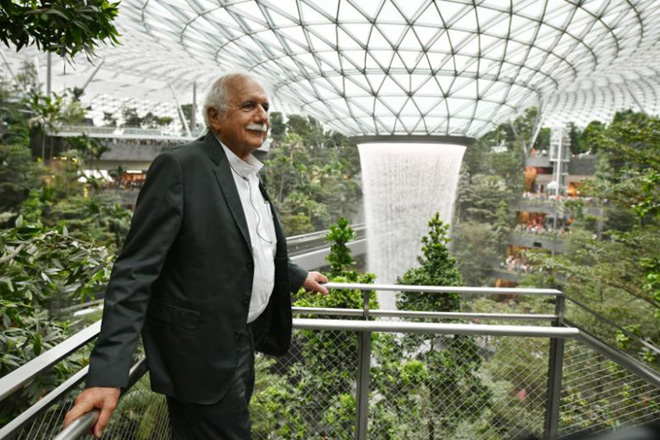Who is Moshe Safdie, the architect who created the phrase "A Garden for All"?
Theorist, architect, and educator Moshe Safdie is an internationally renowned architect and urban planner. Safdie, who argued that the world is becoming more complex day by day, argued that structures should be in harmony with nature.

Safdie, the creator of the phrase "A Garden for Everyone"; has designed neighborhoods, public parks, housing, mixed-use urban centers, airports, and master projects for both existing communities and entirely new cities. Recognized as a thought leader, he continues to inspire generations of architects.
Moshe Safdie was born in Haifa in 1938 to a Sephardic Jewish family of Syrian and Lebanese origin. Safdie, living in Haifa, was nine years old when David Ben-Gurion proclaimed the Declaration of the Establishment of the State of Israel on May 14, 1948. Living on a Kibbutz, working in the countryside, and raising goats and bees, Moshe attended Reali High School. In 1953, when the Israeli government restricted his import business in response to the economic and currency crisis, his father's textile business was severely affected and the entire family was forced to move to Montreal, Canada. After completing his pre-university education at Westmount High School, he received his architecture degree from McGill University in Montreal.
Moshe Safdie (born July 14, 1938) is an Israeli-Canadian-American architect, urban planner, educator, theorist, and author. He is known for incorporating principles of socially responsible design throughout his six-decade career. His projects include cultural, educational, and civic institutions; neighborhoods and public parks; housing; mixed-use urban centers; airports; and master plans for existing communities and entirely new cities in the Americas, the Middle East, and Asia.
In his fifth year, he was selected as a "university scholar" and was awarded a Canada Mortgage and Housing Corporation (CMHC) Scholarship, which allowed him to travel across North America to observe housing developments in major cities.
The architect, who developed his thesis titled "An Example of City Life" in his last year at the university and described it as a "Three-Dimensional Modular Building System", received his diploma in 1961. Two years later, while apprenticing under Louis Kahn, the 23-year-old Safdie was invited by his thesis advisor Sandy Van Ginkel to present his modular project for the 1967 World Exhibition in Montreal. Safdie pioneered the design and implementation of three-dimensional prefabricated units for living; he designed this complex as a neighborhood of open spaces, garden terraces, and many other amenities typically reserved for single-family homes, adapting it to a high-density urban environment.
This seminal project, an important development in the history of architecture, initiates the first phase of Safdie's work: a new kind of urbanism. Showcasing his ideas for integrating modernism with green space and the benefits of suburban living, Safdie successfully rode the wave of interest it brought and built a successful career as a designer of cultural and public buildings. He transformed his radicalism into a dramatic yet sensitive style that became popular around the world.
Who is Moshe Safdie?
After completing his education at McGill University, Moshe Safdie started working at Louis Kahn's architectural office. He learned a lot from the famous architect Kahn. He started his real career with the Montreal World Fair in 1967. In this exhibition, he was assigned to design the housing project called Habibat 67 and achieved a very successful result.
Safdie's Habitat 67 project managed to resonate all over the world. The most interesting aspect of the building is that there is a terrace on each floor. The purpose of designing this way is that the blocks located together have separate privacy areas. With this project, Moshe Safdie combined the themes of individual housing and modern apartments.
In addition to being a famous architect, Safdie is an urban planner, educator, theorist, and author. He has adopted a unique way of thinking. He insisted that the main purpose of architecture is to build structures that meet people's needs and expectations. However, he stated at every opportunity that all these structures built should be compatible with nature.
Moshe Safdie's Principles of Architecture
Architectural structures affect people's lives. Therefore, they should be meaningful, stimulating, and inclusive social spaces.
Architectural designs should be inspired by the culture of the geography in which they are located. It should respond to the essence of the place.
Architecture is not about building the impossible. To produce original and meaningful solutions.
Architects should feel responsible for energy conservation, ecology and renewable materials. One should respect nature and not ignore the efficient use of resources.
Mega scales must be given human dimensions.
